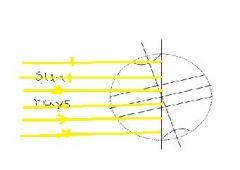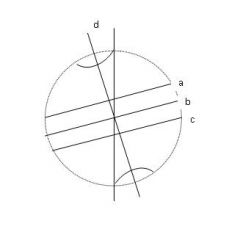![]()
![]()
![]()
Use LEFT and RIGHT arrow keys to navigate between flashcards;
Use UP and DOWN arrow keys to flip the card;
H to show hint;
A reads text to speech;
15 Cards in this Set
- Front
- Back
|
The seasons that have the sun's rays hitting the earth directly over the equator are...
|
fall and spring equinoxes
|
|
|
The northern hemisphere season that has sun rays overhead as far as the Tropic of Cancer is ....
|
summer solstice
|
|
|
The northern hemisphere season that has sun rays overhead as far as the Tropic of Capricorn is ....
|
winter solstice
|
|
|
In N. hemisphere summer solstice, the Arctic Circle gets ___ hours of light.
|
24
|
|
|
In N. hemisphere winter solstice, the Arctic Circle gets ____ hours of darkness.
|
24
|
|

Which season is this for the northern hemisphere?
|
summer solstice
|
|

Which season is this for the northern hemisphere?
|
winter solstice
|
|

What is the name of the line at position A?
|
Tropic of Cancer
|
|

What is the name of the line at position B?
|
Tropic of Capricorn
|
|

How many degrees tilted is the earth's axis at position D?
What is position B called? |
23.5 degrees
equator |
|
|
When the northern hemisphere is having summer, the southern hemisphere is having ....
|
winter
|
|
|
When the northern hemisphere is having spring, the southern hemisphere is having ....
|
autumn
|
|
|
During the equinoxes, the amount of day and night that we experience is....
|
12 hours day, 12 hours night
|
|
|
The longest daylight day of the year for the northern hemisphere is....
|
about June 22
|
|
|
The shortest daylight day of the year for the northern hemisphere is ....
|
about December 22
|

